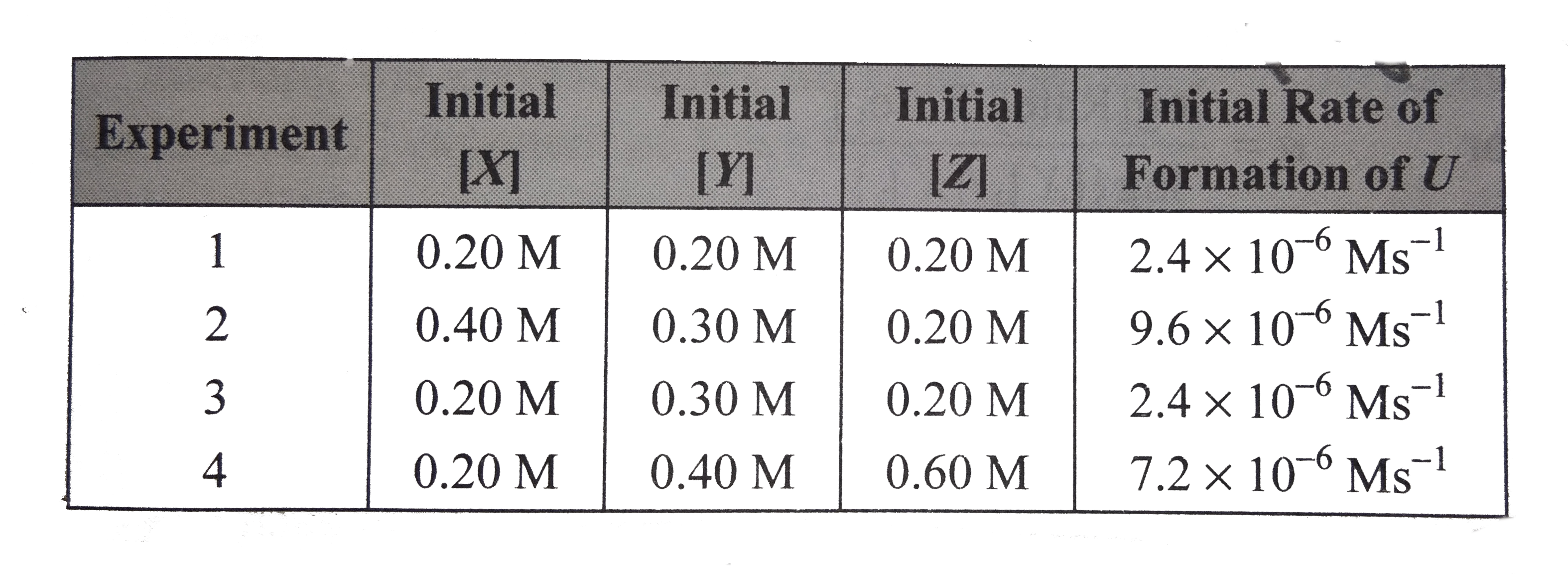For a zero order reaction, the rate law is expressed as,
Rate = k[A]x[B]y[C]z.
If the value of x=3/2 and the value of y = -1 / 2, then the value of z is____.
The correct Answer is:−1
For zero order reaction, x+y+z=0
∴32+[−12]+z=0
∴1+z=0
∴z=−1
Topper's Solved these Questions
Similar Questions
Knowledge Check
If x=3, y=2 and z=-1 , then the value of x3+y3+1y3−z3 is
A4B1C−2D0If ax=by=cz and b2=ac, then show that y=2zxz+x
Axyx+zBxy2(x−z)Cxz2(z−x)D2xzx+zIf the line x−2−1=y+21=z+k4 is one of the angle bisector of the lines x1=y−2=z3 and x−2=y3=z1 then the value of k is
A1B2C4D8
For the reaction, X+Y→Z, the rate is given as k[X]1/3[Y]1. Calculate the order of the reaction.
View SolutionFor the reaction, X+Y→Z, the rate is given as k[X]1/3[Y]1. Calculate the order of the reaction.
View SolutionIf the line x−2−1=y+21=z+k4 is one of the angle bisector of the lines x1=y−2=z3 and x−2=y3=z1 then the value of k is
View SolutionMethod of intial rates: Given the following data, determine the rate law expression and the value of the rate constant for the reaction. 2X+Y+Z→U+V

Strategy: The rate law is of the from
Rate=k[X]a[Y]b[Z]c
We must evaluate a,b,c, and k by using the reasoning outlined earlier. Thus, to determine order with respect to X, we must select those experiments in which concentration of X changes but the concentrations of Y and Z are kept onstant and so on. Note that the coefficient of U in the balenced equation is 1, so the rate of reaction is equal to the rate of formation of U.
View SolutionInterpration of the rate law: For a hydrothertical reaction X+Y+Zrazrr products
the rate law is determined to be
Rate=k[X][Y]2
What happens to the reaction rate when we make each of the following concentration changes ?
(a) We dobule the concentration of X without changing the concentration of Y or Z.
(b) We double the concentration of Y without changing the concentration of X or Z.
(c ) We double the concentrations of Z without changing the concentration of X or Y.
(d) We double all three concentrations simultaneously.
Strategy: Interpret the law to predict the changes in reaction rate. Remember that changing concentrations does not change the value of k.
View Solution
